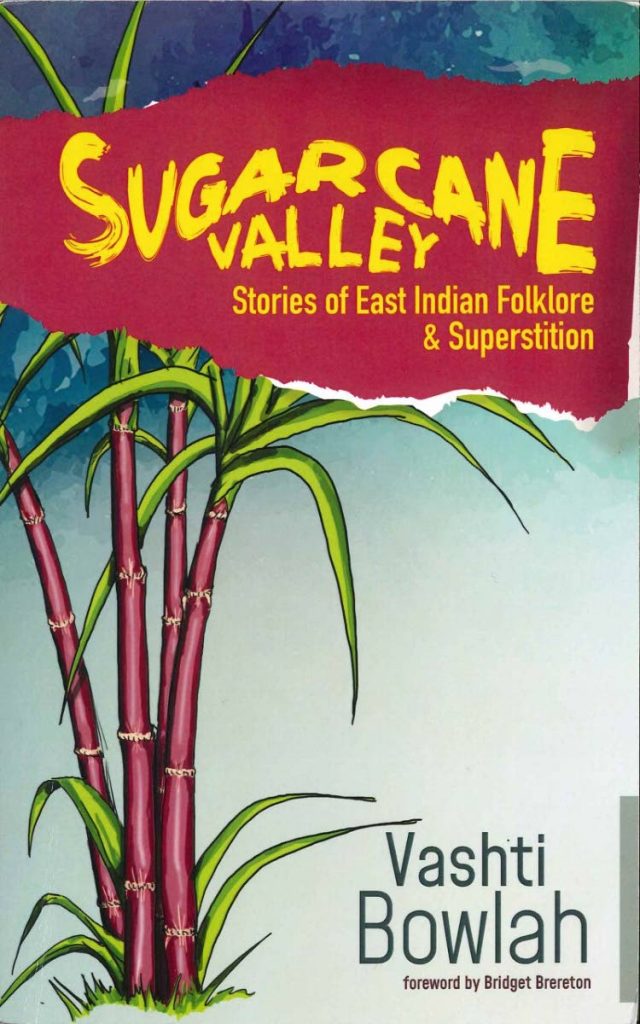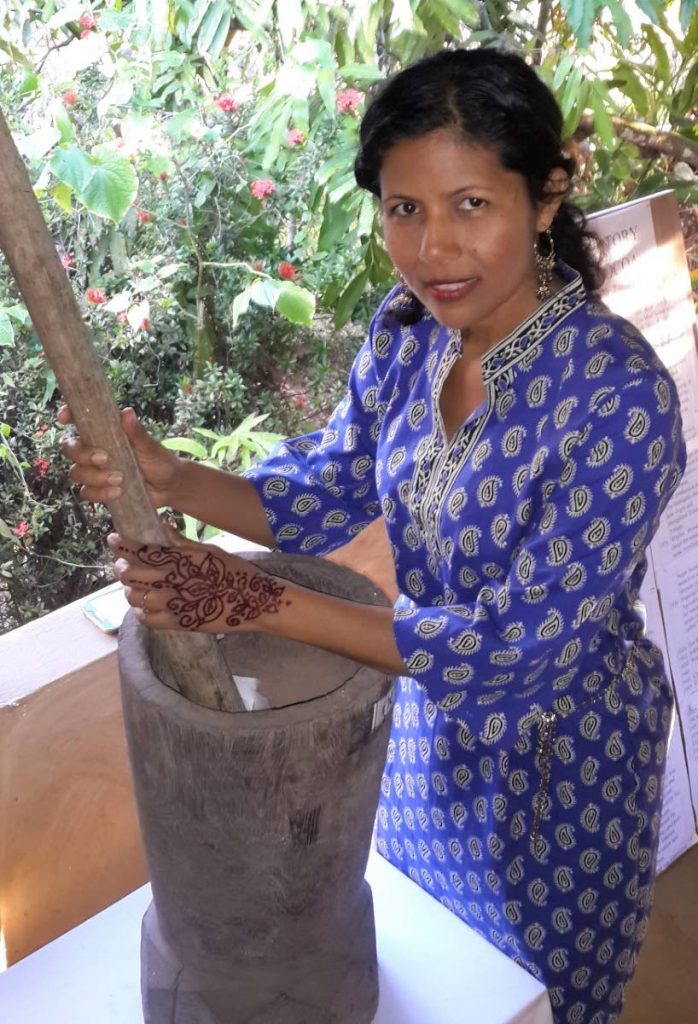Spellbinding folktales

SUGARCANE Valley: Stories of East Indian Folklore & Superstition, by Vashti Bowlah, is a small book with an ordinary cover featuring four stalks of sugarcane.
But don’t be fooled by its simple appearance. Inside are spellbinding stories of witches, churiles, saapins and a jinn called Sheik Sadiq.
If you don’t know any of these ghosts, spirits and jinns from Indian folklore, Bowlah’s short stories serve as a revelation as much as they fit the bill for an entertaining read.
“The supernatural is everywhere,” writes renowned historian and professor emerita Bridget Brereton in the foreword. “As a social historian, I read these stories, at least in part anthropological or ethnographic text: accounts of lifestyles and folkways now largely vanished.”
Indeed, folktales are a good indication of what a culture values.
Most of the stories are set in the past – 50 to 60 years ago. Bowlah’s familiarity with East Indian folklore is evident. Her experiences living in rural Trinidad clearly emerge in these stories.
She masterfully combines suspense with her wry sense of humour. For Bowlah, these stories serve as a reflection of her childhood.
“I refer to these snippets of my childhood because it not only helped to mould me into the woman I am today, but to point me in the direction of my writing,” she says.
Those of us who have had the experience of living in rural Trinidad will especially find these stories ring true. For a time, I lived in central Trinidad, and I knew characters like the women who were the subject of gossip in Sugarcane Valley.
All newcomers like Neela, the seamstress who moves to Sugarcane Valley in the opening story, become an outlet for resident’s suspicions.
This seems to be a masterful, albeit subliminal plan for cultural preservation. Strangers can bring new ideas and erode a village’s culture, so marginalising strangers by stigmatising them as scary folklore characters protects the cultural norms.

Most prevalent are stories about beautiful women, which demonstrate the conflict between beauty and power. In Bowlah’s stories, women transcend the powerless state of being young, teenage brides by evoking fear through the power of folklore characters. Villagers suspect 19-year-old Maya of being a saapin (a snake with powers). Fourteen-year-old Asha struggles to survive a lurking churile – (a woman who died in childbirth).
Men try to control women, but women usually prevail by using their beauty to cast spells, metaphorically speaking, on men. Children and teenage girls grow powerful as they master their culture and become associated with folk characters. Mothers wield great power, but men defy their mothers to pursue pretty girls.
In village culture that often seems to be bent on subjugating women, Trinidad Indian folktales often turn the tables transforming men to helpless victims of love and beauty.
Love and marriage are prevalent themes in most of the 11 stories, and the treatment of these two themes is fascinating for what it shows about male/female dynamics.
Stories of child or teenage marriage transcend any maudlin sense of sacrifice and avoid being interpreted as abusive by allowing women the chance to transcend the circumstances that define their lives – including arranged marriages. Both men and women seek ideal romance. Men defy good reasoning to pursue romantic notions and women take advantage of their beauty to gain control.
Often, stories like Real Mermaids Don’t Wear Shoes poke fun at how naive men can be. Readers clearly see the direction in which relationships are going, yet the men in the stories take long to piece clues together.
All in all, Sugarcane Valley is a snapshot of an Indian Trinidadian village, the folklore that defines it and binds it to the past and gives it a rich sense of presence.
Sugarcane Valley is a welcome addition to the folklore history of TT.
About Bowlah
Vashti Bowlah is a writer from TT. She was selected for the UWI/Cropper Foundation Creative Writers’ Workshop, the Craft of Fiction at UTT and the Mentoring by the Masters program hosted by the Ministry of Arts and Multiculturalism.
She is also a registered author with the Cultural Division. Bowlah’s stories have appeared in The Caribbean Writer, St Petersburg Review, Poui, WomanSpeak Journal, Signifyin’ Guyana, Tongues of the Ocean, St Somewhere Journal and Jewel of the Caribbean as well as local newspapers.
She was awarded The Caribbean Writer’s David Hough Literary Prize, and shortlisted for the inaugural Hollick Arvon Caribbean Writers Prize. Her debut book Under The Peepal Tree was launched at the NGC Bocas Literary Festival in 2014.


Comments
"Spellbinding folktales"